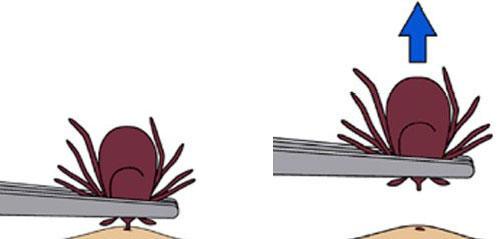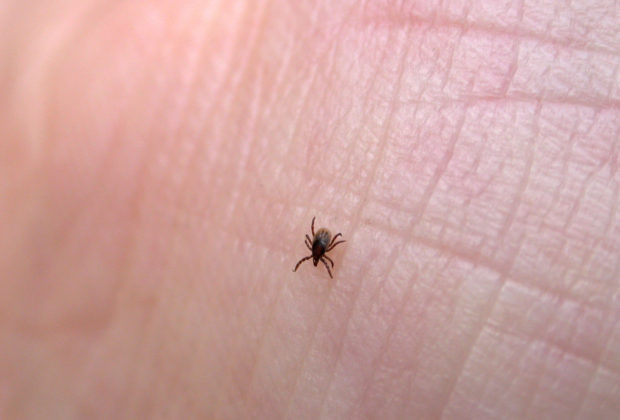Anyone who spends time outside or hikes, works, plays in wooded or grassy places is at risk of contact with infected ticks which are the main vectors (or transmitters) of Lyme disease. The risk is especially high during warm summer days. But, luckily, there are many tips that you can take to protect against ticks.
What is Lyme disease and how does the infection occur?
Lyme disease, also known as Lyme borreliosis, is an infectious disease caused by bacteria of the Borrelia type. The disease has been found on every continent except Antarctica.
The disease is primarily transmitted by Ixodes ticks: Ixodes ricinus (the sheep tick or castor bean tick) in Europe, Ixodes scapularis (The black-legged tick or deer tick) on the East Coast of the United States, Ixodes pacificus (Black-legged tick) on the West Coast of the USA and Ixodes persulcatus (the taiga tick) in China.
Tick has several developmental stages, but most people get Lyme from the bite of the nymphal, or immature form of the tick. Since they are so tiny and their bite is painless, so many people do not even realize they have been bitten and they don’t notice that the tick is attached to their body. The longer it stays attached, the more likely it will transmit the Lyme into your bloodstream. Usually, the infected tick must be attached for 36 to 48 hours before the bacteria can spread to the human body. Lyme disease is treatable, but it can cause serious health problems if you wait too long to get treatment.
Signs and Symptoms
The another name for Lyme is “The Great Imitator,” because its symptoms mimic many other diseases. It can produce a range of symptoms, depending on the stage of infection. Not all patients with Lyme disease have all symptoms. Also, many of the symptoms are not specific to Lyme disease but can occur with other diseases, as well. The incubation period is usually one to two weeks.
Early signs and symptoms, according to Center for Disease Control and Prevention (CDC) are rash, fever, chills, headache, fatigue, muscle and joint aches, and swollen lymph nodes. These are the symptoms of the infection that have not yet spread throughout the body. The classic sign of local infection is a circular outwardly expanding red rash. It also may be warm but is generally painless.
Later signs include severe headaches and neck stiffness, rashes on the other areas of the body, Arthritis with severe joint pain and swelling, irregular heart beats or heart palpitations, nerve pain, dizziness, shortness of breath and even the problem with short-term memory.
If you notice any of these symptoms and have had a tick bite, live in an area known for Lyme disease, or have recently traveled to an area where Lyme disease occurs, seek medical attention immediately.
How to remove a tick
CDC recommends following these steps to remove the tick attached to your body:
- Use fine-tipped tweezers to grasp the tick as close to the skin’s surface as possible.
- Pull upward with steady, even pressure. Don’t twist the tick since it can cause the mouth-parts to break off and remain in the skin. If this happens, remove the mouth-parts with tweezers. If you are unable to remove the mouth easily with clean tweezers, leave it alone and let the skin heal.
- After removing the tick, it is important to clean the bite area and your hands with rubbing alcohol, an iodine scrub, or soap and water.
- Dispose of a live tick by submersing it in alcohol, placing it in a sealed bag/container, wrapping it tightly in tape, or flushing it down the toilet. Never crush a tick with your fingers.

Tips to stay safe from infected ticks and Lyme disease
- Perform a full body check every evening after being outdoors (even in your own yard). Ticks often hide in body folds, like underarms, in/around ears, inside the belly button, back of the knees, between the legs.
- To avoid ticks, walk in the center of trails and avoid walking through tall bushes or other vegetation.
- Use repellent on clothing and tent floor. Use a repellent with DEET (on skin or clothing) or permethrin (on clothing and gear). Apply it to the skin and you’ll have a protection up to several hours.
- Wear light-colored clothing sp the tick is more easily visible before it attaches itself.
- Try to keep the body covered by wearing long-sleeved shirt and pants. (Possibly tucked into socks or boots), a hat and insect shields.
- Check your clothing and pets for ticks because they may carry ticks into the house. If you find them on your clothes place it into a dryer on high heat to kill ticks.
- Always carry tweezers. Use tweezers to grip the head and remove the tick.


